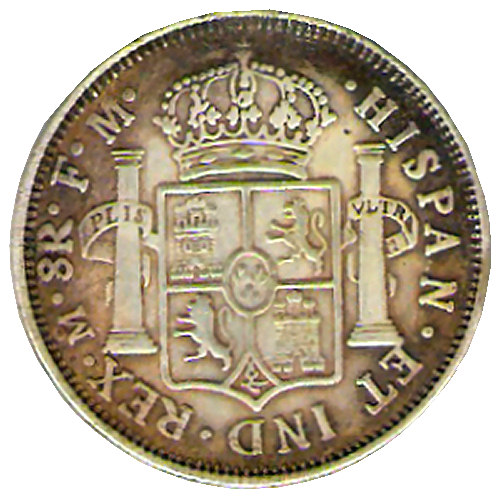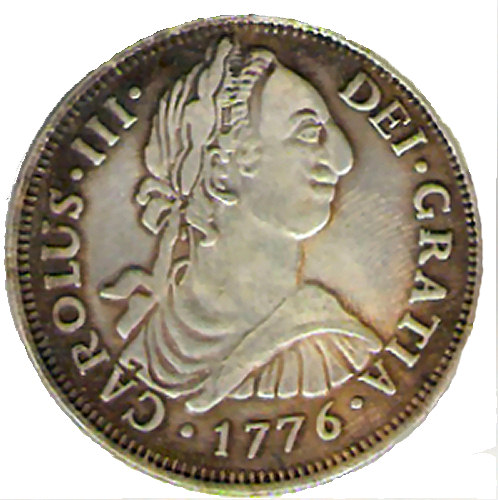



| This is an example of an eight-reales silver coin of the Eighteenth Century. {Note: The obverse appears on the right side; the reverse is on the left.} As noted in the photos above, this coin is dated to the year 1776. The legend on the reverse side reads: "Hispan Et Ind Rex", which translates into: "King of Spain and the [West] Indies". Minted in Mexico City (as noted by the letter M with a small "o" above it on the reverse), this coin also includes the numerals/letters 8R and F and M. The "8R" refers to the denomination: eight reales. The letters "F" and "M" are the initials of the names of the assayers at the Mexico City mint in the 1770s. In this case, the assayer during that time period (1772-1788) was Antonio Forcado y Plaza, who employed the "F" and the "M" as his initials. The eight reales coin is what was known as a trade dollar. It was intended for use throughout the world, and was accepted in trade by many countries, including the British Colonies which were becoming the fledgling United States of America. These coins are also sometimes refered to as milled dollars, meaning that the planchets, or coin blanks, were produced on a milling machine. Being produced on a milling machine ensured that these coins were standard and uniform. The fact that the Spanish eight reales coins were uniform in weight, and therefore of a standard amount of silver, is what induced many countries to accept the coins as the standard they would use in trade. It should be noted that the first eight-reales coins produced by Spain (beginning in the year 1732) bore an image on its reverse of two globes between two pillars, representing the uniting of Europe (the "Old World") and the Americas (the "New World"). The reverse of the first coins held an image of the king's heraldic shield. In the year 1770, King Carlos III decided to alter the design of the reales coins, by replacing the globes between the pillars with his heraldic shield between the pillars, and moved the combined image to the reverse. He then had his own bust placed on the obverse, with the legend "Dei Gratia" and "Carolus III", translating as "Thanks be to God, Carlos III". |
